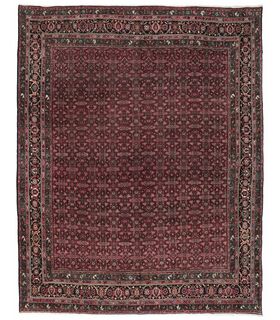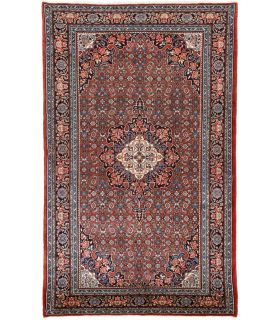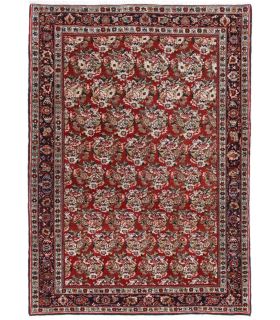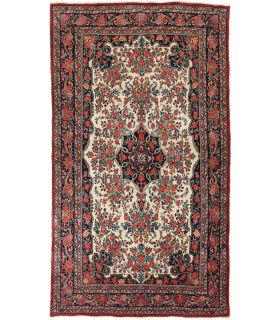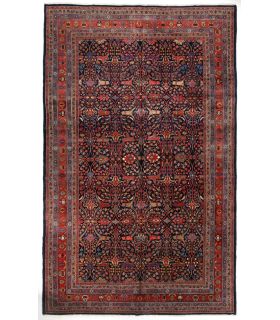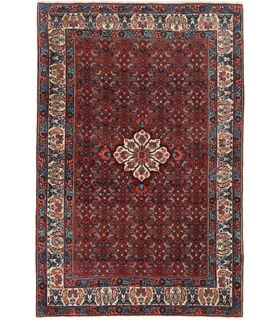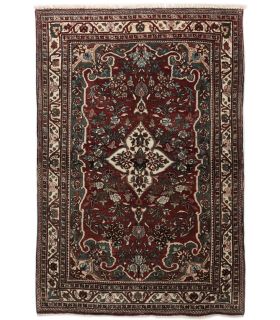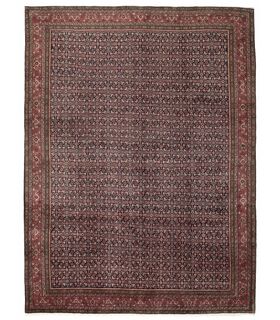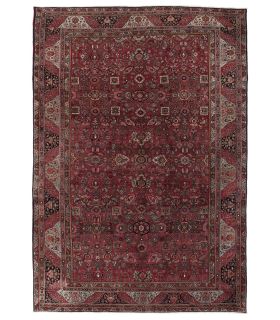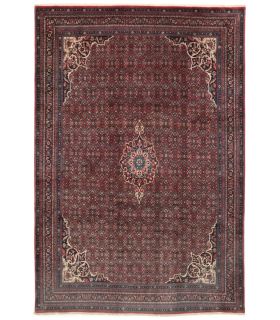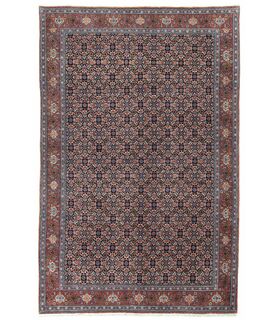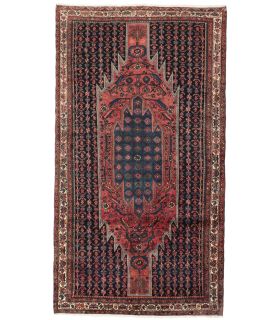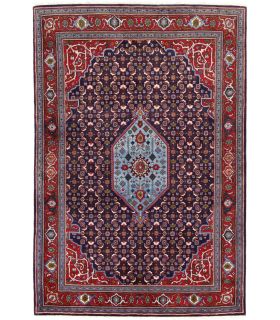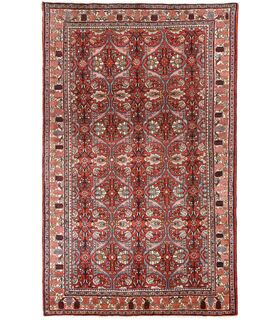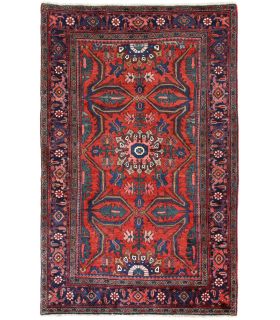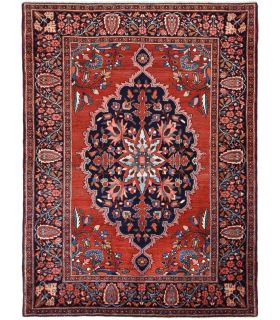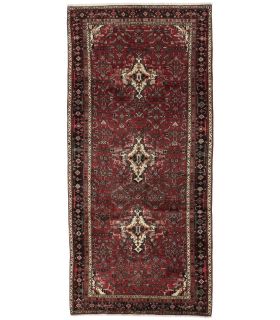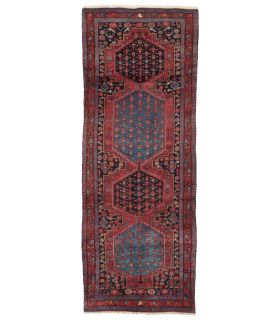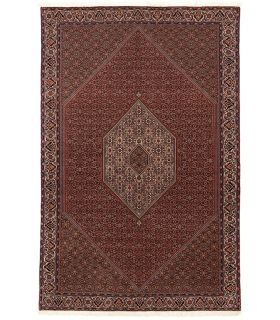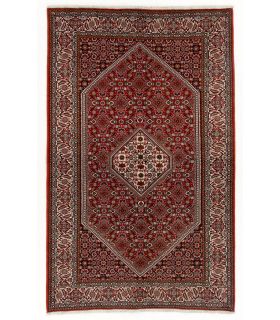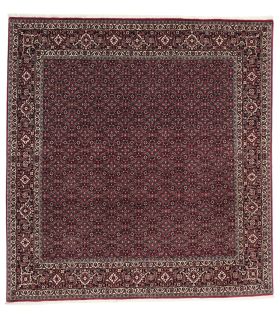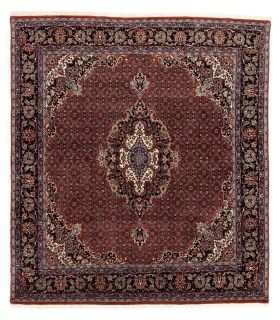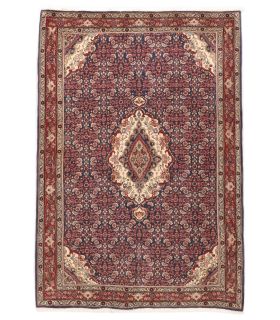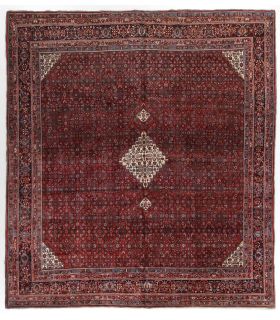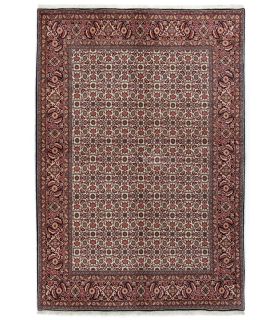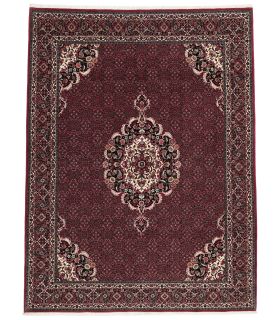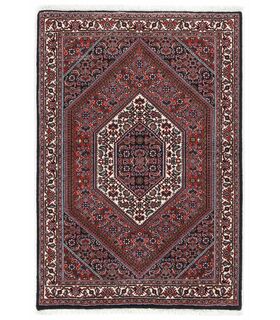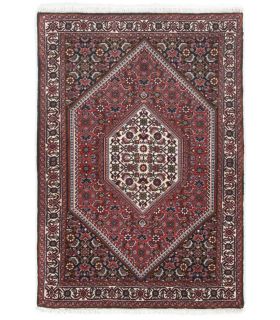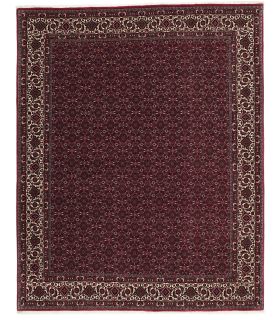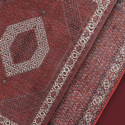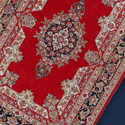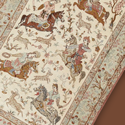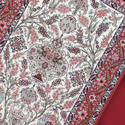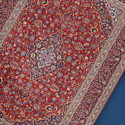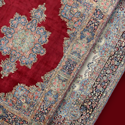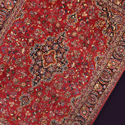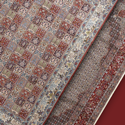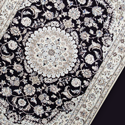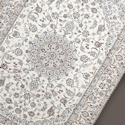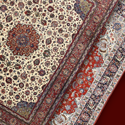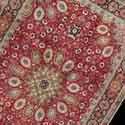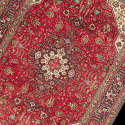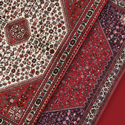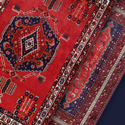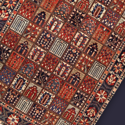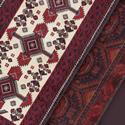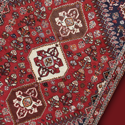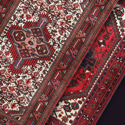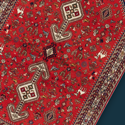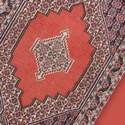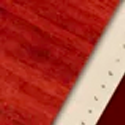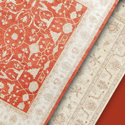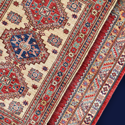Bidjar
Bidjar Carpets: Origin and Manufacture
Bidjar carpets originate from northwest Persia, a region primarily inhabited by Kurds. Kurd tribes knot numerous types of carpets in this vast region. The Bidjar carpet is perhaps the most famous, artistically handcrafted carpet of the Persians. It has been knotted for centuries in various communities in Kurdistan. Bidjar carpets are hand-knotted in the home, primarily during the winter months when farmers take shelter to bridge the winter. During the rest of the year, farming is the predominant source of income for resident farmers living in the expansive countryside around the town of Bidjar in today’s Iran. Farmers earn their livelihood during the winter months by knotting carpets at home. Men traditionally pursue the carpet handcraft. Attributes such as robustness, durability and even indestructability have made these carpets world famous.
The quality of Bidjar carpets
The excellent quality of Bidjar carpets is striking both in terms of the knotting technique of past Persians and the kind of wool used. Only high quality virgin wool of sheep from the evergreen pastures and valleys is processed to make this kind of oriental rug. Passing a weft thread through after each individual row of knots, then vigorously pounding them down and the technique of keeping the pile upright make the Bidjar carpet an indestructible and highly noble exhibit, in the same manner as every Persian carpet from Bidjar that we have in our shop.
The origin of Bidjar carpets
Bidjar carpets were formerly knotted wet in the town of Tekab (Tekap) to make them even more tough and dense. This technique is no longer used today; however, high quality Bidjars are preferably referred to as Bidjar-Tekab carpets, even if they were not woven in the town of Tekab. Nowadays, Bidjar carpets are knotted only occasionally in Tekab, primarily in smaller sizes. Smaller-sized Bidjar carpets are also knotted in Saqqez. Bidjar carpets are no longer knotted in Bidjar itself. The city of Bukan is currently the center for weaving Bidjar carpets. Both small size and larger size carpets are woven in this Persian city as fine carpets, with silk nuances crafted into their contours. These carpets testify to excellent craftsmanship. Traditionally, men exclusively do the knot weaving due to the physically exhausting work involved in producing them. Both men and women knot carpets in many of the communities situated in the Persian carpet provenances, also together as a family unit.
Fine, valuable Bidjar carpets traditionally originate from the cities of Tekab and Bukan in Iran. For nearly 30 years, somewhat coarser and therefore lower cost, mid-value quality carpets have been hand-knotted in the smaller town of Sandjan, which is located approximately 140 kilometers northeast of Bidjar. These carpets, known as “Bidjar-Sandjan”, consist of short-thread virgin wool. They are not as finely knotted compared with the Bidjars from Tekab and Bukan and therefore appear somewhat coarser. Knotting and workmanship are performed very meticulously, which indeed places Bidjar-Sandjan carpets, with a minimum knot density of 240,000 knots per square meter, on equal footing with their fine precursors, with a knot density approx. 360,000 knots per square meter. A typical feature of the Bidjar-Sandjan carpet is its board-like stiffness, which warrants nearly unlimited durability. This is also one reason why demand for these robust and indestructible carpets has risen over the years. A genuine, hand-knotted oriental rug, i.e., Persian carpet, is especially in demand when it comes from Bidjar. We offer new and used Bidjar carpets and can deliver them in 3-4 days.
Patters & colour scheme of Bidjar carpets
The well-known Herati pattern is the defining design of all Bidjar carpets. It depicts a blossom (rosette) with two adorning leaves. The portrayed image resembles a pond with two fish swimming about, which is why the term “mahi” (fish) is used. Several interlocking diamond shapes complete the image of the Bidjar carpet. Other repetitive patterns may also be knotted into the carpet. Floral specimens are rare, and they are highly favoured among buyers. Red, as the base colour, gives the so-called “Herati” pattern its timeless look, with red invigorated by elements of blue and beige. The carpet’s inner field is either filled with repetitive patterns or divided up into several superimposed diamond shapes. The Herati motif is comprised of small rosettes; similar to a blossom framed in two leaves. Some claim that the motif looks like two fish swimming around a pond and therefore call it “mahi” (fish). The pile, which is usually red and made of 100% cotton, is in exceptionally good condition among all of our available carpets.





